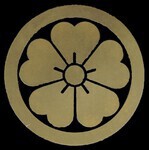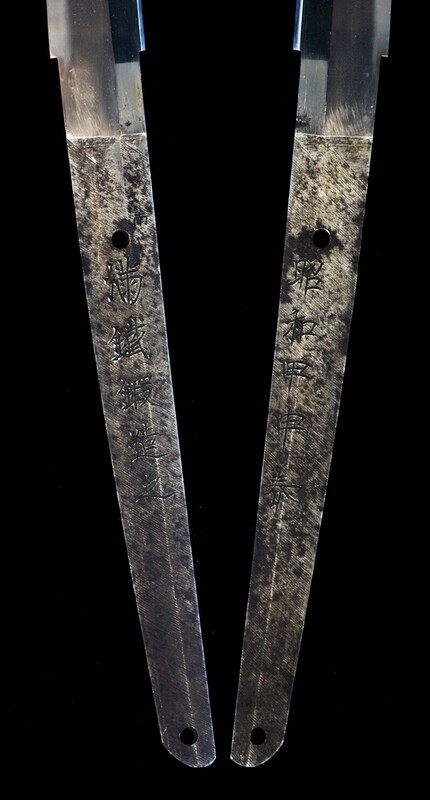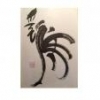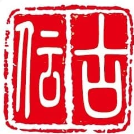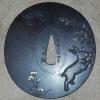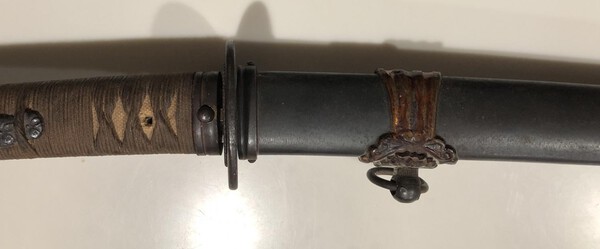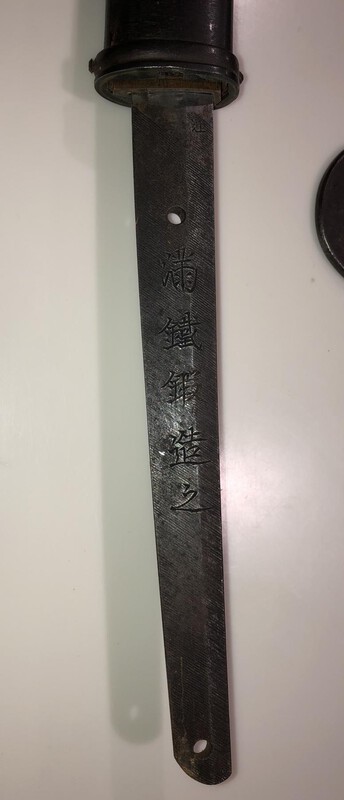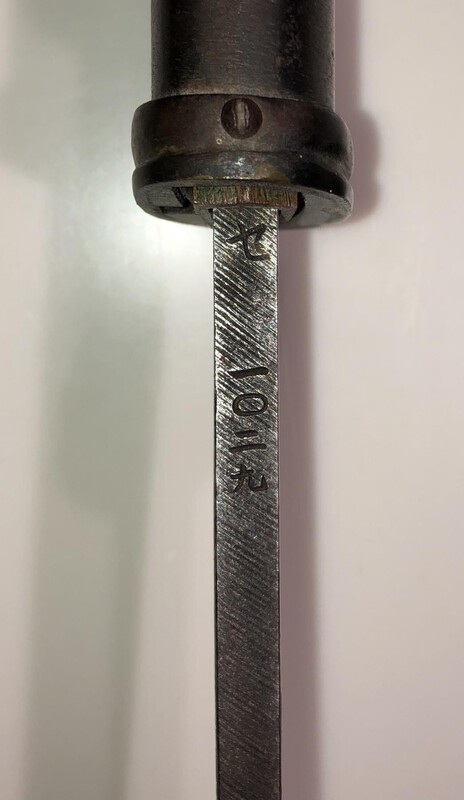Leaderboard
Popular Content
Showing content with the highest reputation on 02/22/2021 in all areas
-
3 points
-
"They" is probably me in this case - it sounds very much like something I wrote 12 or so years ago, and later changed to >regardless of whether<. Well, that's what you get when a non-native speaker like me butchers the English language ... At least it gave me the much needed nudge to revise, amend, and update my article, and I finished it today. I sent it to a good friend for proofreading, and will submit it to the NMB shortly. I hope that the endless shame of not being 100% usable in the court of my peers will finally be lifted from me, although wicked tongues might point out that you get what you pay for ...3 points
-
It's a Romanization problem. They are half-using the system for Japanese people. Try Chikuzen instead of Thikuzen. (And Den is a pointer to a smith when there is no signature.) PS And it's Yoshisuke, their mistake.3 points
-
Neil I agree with your idea, they were made for the Japanese troops stationed in Manchuria, and probably designed there. And I believe 関東軍 Kwantung Army should have most of the Mantetsu swords since they formed and stationed in Manchukuo and South Manchurian Railway Zone after the Russo-Japanese War. Starts from 1943, the Kwantung Army shipped off many troops for use in Pacifica theaters. 1945, January the Army headquarters move 13 Divisions Kwantung Army to Pacifica theaters. April, The US army took Okinawa and starting to bomb mainland Japan,7 Divisions and 1/3 equipment from Kwantung Army back to Japan for homeland defense. By the end of the war, the Kwantung Army should be surrender at all theaters. I think not many of these RS Mantetus were made, that's why they don't show up much. PS: So far,I saw only 3 datings on these, 1.your 1938(only one ) 2.1944(most),3.no date(2 or 3), nothing in between.I tend to believe it was designed /made at the late war in China for Kwantung Army. The reason some call it the late war home defense swords,maybe because it was brought back to Japan at late war(1945, April)by the Kwantung Army for homeland defense use?Just a thought.3 points
-
Hi Fiona, unfortunately this is a Chinese replica and not an authentic Japanese sword. http://www.jssus.org/nkp/fake_japanese_swords.html3 points
-
2 points
-
2 points
-
2 points
-
2 points
-
Bruce, if you go to my last post in Mantetsu owners, a survey, you will see the 1938 MRS outfit with the cloth wrapped handle, and the blade stamped with the Railway stamp, and dated 1938. This reinforces my hypothesis that the MRS (blade and koshirae) sword was a unique and individual model in its own right. I suspect they were made for the Japanese troops stationed in Manchuria, and probably designed there. As PNSSHOGUN (John) suggested somewhere, the fittings have an almost Chinese design look about them. Remember in the Ohmura study, it is mentioned how Japanese blades would break in the cold Manchurian environment. And this was one of the drivers for a steel to be developed to withstand the cold. "Mantetsu". I have examples spanning 1938 to 1945, all with Mantetsu blades. So again, theories like, late war home defense swords, Rinji prototypes, etc, I think can be ignored. Another reason why these swords are so rare, and never show up in photos of swords surrendered in the Pacific.2 points
-
Sun was out, and I thought to try to capture my 3 blades in the best light. Interesting to place them together. Sori for the "Morimitsu" wakizashi and wartime blade is very similar Will work on my photo skills. Also adding after carefully cleaning with a cotton tip the menuki and the kashira piece for the later wakizashi. Less dirty now. Wakizashi - possible bizen - possible Kyoto-Osaka - possible 1400-1600 period Katana - war blade from middle of 1500 Wakizashi - Bizen middle of 16001 point
-
Thank you gents (and any ladies out there) I am truly humbled by the fact that most are renewing their support memberships. You guys (and gals) rock!1 point
-
Thank you so much for sharing these! It makes me want to also get better at taking pics of my own blades....1 point
-
Trying to catch the hada of the katana. The hamon-boshi is fainly seen on the kissaki, I am a bit afraid that it is going out. Hard to tell. Sorry for all the pictures, I hope you did not get bored. For me, this photo session actually made me enjoy the 1600 blade more. Found it much more alive now -Björn1 point
-
1 point
-
1 point
-
1 point
-
1 point
-
I suggest that you use kids foaming soap and a well used very clean toothbrush on the menuki and fuchi kashira. The soap comes in a bottle with a plunger top that puts out a ribbon of soamy soap.1 point
-
1 point
-
Freddie, I think you are curious about the Japanese registration card (Tōrokusho), right? I can attach a photograph of one here, and translate all the sections into English, if you like. If you will believe me, though, and save me some work and time, then here is what the card says. *The top half is for swords. From the right, Box 1 says 種別 Shubetsu = type. (E.G. Tantō) Box 2 長さ Nagasa = length Box 3 反り Sori = depth of curvature Box 4 目釘穴 Mekugi-ana = No. of tang holes Box 5 銘文 Meibun = written characters, (meaning signature, date etc. on tang) Box 6 備考 Bikō = Comments Apart from the description of the blade, you can see a number given to the blade which is recorded by the regional Education Committee. Finally there is a place & date of registration. Thus the blade is recorded. Now. Further option. If you wish to have the blade authenticated, then you are free to choose an organization to look at your blade and make a judgement. Such panels of ‘experts’ usually charge money for a) their opinion and b) any fancy folding certificate and envelope that they might issue. At this point they should tell you with luck that the blade is Shōshin (what it purports to be) or they might decide that it is Gimei. Increasingly though, we find them unable to make up their mind, so a third answer of Horyu (held, undecided) is handed down and no money is charged. (NBTHK anyway)1 point
-
I think a lot depends on with what budget you are shopping with. In general I would recommend somewhere around 2000 to 3000€ as that will get you a decent package. Sometimes you can find signed & dated wakizashi (even with koshirae) at least in decent polish and NBTHK Hozon for sub 2000€ [even though I would personally recommend skipping koshirae in that price range and invest as much as possible to the blade]. The problem is the majority of them will be in Japan (well not necessarily a problem), and of course good deals can go very fast. Unfortunately I cannot point out good deals in Europe at the moment as prices in here seem to be lot more than in Japan. There are sometimes very good deals at this very site. I remember late last year there was signed and dated + papered Goami school wakizashi for very affordable amount of money. Of course quite obscure school etc. but someone got a good deal there. As for the price of this current item. I think the 300€ that it started with was quite reasonable start. I might have thought somewhere around 500-600€'s so I can't really understand how it is close to 1500 now... So in auctions it depends a lot of who is making bids. And of course asking prices can fluctuate a lot, basic items are worth what someone is willing to pay for them, exquisite items can be above pricing. For similar price than this auction piece is going for c.200k Yen, here is an offering that just popped up at Tōken Matsumoto: https://www.touken-matsumoto.jp/eng/product_details_e.php?prod_no=WA-04291 point
-
I just got a notice from my credit card that the payment had auto-renewed, & that no action needed to be taken.1 point
-
1 point
-
I think you are the only one on the side of the prosecution here Guido. The rest of us are firmly on the side of the defense We appreciate what you do for the community. Think the meaning was fairly clear.1 point
-
As my previous post I was on auto-renewal and had an email stating it would auto-renew in two days, the the payment was made1 point
-
I could suggest the download and gallery sections are given more prominence, whether that is a larger tab or even separate button in the banner? Some sort of functionality/visibility improvement, I suspect they may be a bit hidden away up there.1 point
-
Translation of what exactly? The torokusho lists the size of your sword, what it is (wakizashi, katana etc) and what the signature (if any) reads. The rest of it is just legal license stuff....registration of the sword. All swords have to be registered in Japan. Nothing on that document that a ruler and your eyes can't tell you.1 point
-
Sounds like this supports his claim. Is it safe to assume a Sword Academy makes swords? Or is it about sword fighting skills? As Trystan says, other options make this idea completely debatable. But the author's statement certainly opens up the possibility these were being made as early as 1938. While we haven't seen middle years in the model, there are other things we haven't seen either. The author quoted Ohmura (or they both were quoting the same source) when he said that Mantetsu supplied swords to "...Shanghai Army & Navy....". I don't recall ever seeing a Mantetsu blade in Navy fittings. And until very recently, we had never seen a 1945 blade with an unheard-of slogan. So I only put the fact out there to begin laying out the facts, as few as they are, when they appear.1 point
-
They really don't want you to see the blade in these auctions1 point
-
Not sure why ,my 2 Rinji Mantetsu both have 2 holes on the tang , but one hole on the handle, I think your other 2 maybe the same. I never saw Mantetsu in regular Type 3 mount.1 point
-
Hi Trystan, of course anything is possible, but in the case of the 1938, there is only one hole in the handle as well. And everything fits perfectly. At one time, I had similar thoughts to you, but wondered if the factory was cleaning out its factory of retained samples of blades, and decided to mount them, who knows. I only wish there was more information on this model, in the mean time the detective work continues. By the way Trystan, do you know of any Mantetsu blades in regular Japanese RS (type 3) mounts?1 point
-
Well....I'm 3 for 3 with total fail with them. Even after winning 2 bids, before they bothered to tell me they could/would not ship the item(s). Item #1 was a cut up sword, all pieces under 15mm per legal export rules, claimed "unable to ship to the USA" ( receiving my $43 dollars back was like pulling teeth, took 4 weeks). Item #2 Tsuba (funds returned promptly) after claimed "unable to ship to the USA". Items #3 sword care kit, yep you guessed it "unable to ship to the USA", bid canceled from their end. Done, done & done with them for good! Mark1 point
-
Neil Your 1938 Mantetsu unlike all the other Mantetsu in the same Rinji mount, has only one 目釘穴 instead of two. Also, the other Rinji Mantetsu we saw was all made in 1944 or no year on the tang, we don't see Rinji Mantetsu made in any other years but your 1938. It got me thinking, is it possible an early Mantetsu blade remount later for some reason? Trystan1 point
-
From my readings for Masatsugu (in NMB Downloads): Due to demands on supplies, including food, and the expansion in numbers of students, in November 1941 teaching activities of the Denshu Jo were transferred to the new Nihonto Gakuin 日本刀学院 (Japanese Sword Academy) which opened at Sagamihara, Zama, Kanagawa Prefecture. This is on the Sagami River around 35 km SW of Tokyo, and was on the grounds of the Imperial Army facility which also housed the Army Officers Academy. The Gakuin was headed by Yoshihara Katsukichi Kuniie (also called (Akihiro)(昭広)(1894-1970) as chief instructor.1 point
-
1 point
-
Just found the wakizashi as it was sold previously 2016 by Swedish Auction house, I would advice skipping that item as you can find much better items. https://auctionet.com/en/402582-sword-Japan-sueyuki-1624-kanei-16441 point
-
1 point
-
Freddie, it’s not that clear, but, what I believe this is saying is that the Mei on the sword will be recorded on the torokusho irrespective of whether it is genuine or false. It does not express an opinion as to whether it is genuine or false and so is not a certificate of authenticity. No one who has been around this hobby for any time treats the torokusho as authenticating a sword’s signature.1 point
-
Neil, I'm going through the LIvio W. Cillo book "An Oshigata Book of MODERN Japanese SWORSMITHS 1868-1945" (which I believe is a re-print of Slough's book). On page 95, discussing Mantetsu, he says: "On December 1, 1938, the company decided to set up an additional facility to increase production. The former Futaba Kindergarden building, located next to the monument to Mantetsu workers who died during employment, was chosen as the new site. The Darien Factory concentrated on producing blades, while the new facility made sword mounts, polished and performed final assembly." I'm thinking this site might be the origin of these fittings. It would also explain your '38 in such fittings (which isn't posted here. Do you recall which thread it was posted?)1 point
-
和泉守兼定 Izumi no Kami Kanesada Is quite a famous name with several generations1 point
-
Brian had a post about spending time appreciating and learning from the most skillful works when one can. I agree. Most of us mere mortals cannot afford most of the finest maker fittings, or even get access to them. But that should not dissuade from seeking them out and study. From examples, you can learn to spot poor work (inlay, engraving, patination) from good work. You can internalize the clever use of space as a medium in fittings, as it's surely a tool that makers used often. Themes and legends are often represented, from well rendered works one can lend that to evaluation of good works of the same. A couple of examples from "Pinnacle of Excellence: Sword Fittings of the Mitsumura Collection" that I have spent a lot of time looking at are posted below. I don't think posting a million pictures from books is a great idea, but I use this as a starter. We can resurrect this thread:1 point
-
Chris, it is amazing how many WW2 photos show swords with white cloth covered tsuka. Not many survive today. This one has yellowed with age and use.1 point
-
That canvas protection is seen often on old ww2 soldier photos when the tsuka is shining white. Its very rare to have it. Neil has an outstanding collection.1 point
-
1 point
-
1 point
-
0 points





